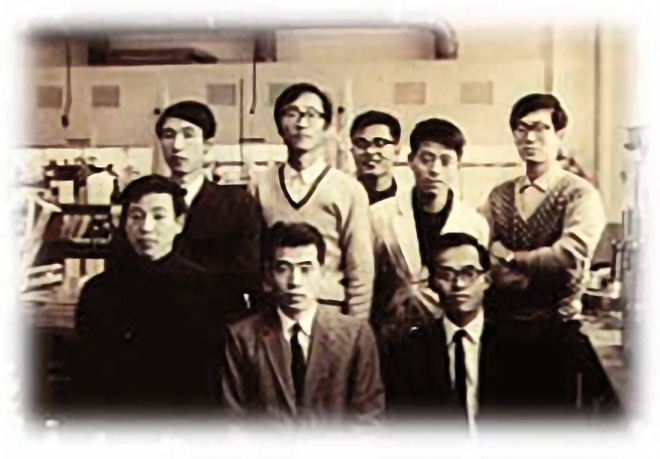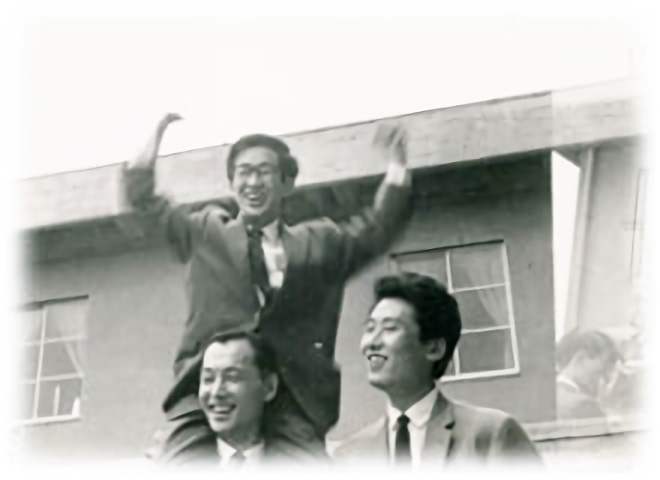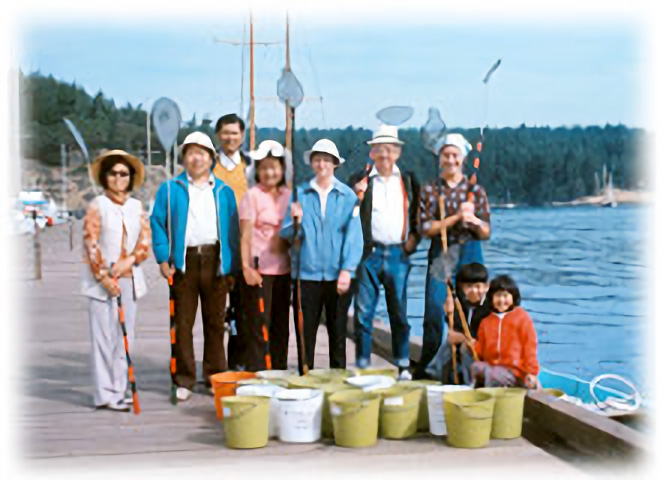Nobel Laureates' Research at Nagoya University
Dr. Ryoji Noyori, who was awarded the Nobel Prize in Chemistry in 2001
Dr. Makoto Kobayashi, Dr. Toshihide Maskawa, who was awarded the Nobel Prize in Physics in 2008
Dr. Osamu Shimomura, winner of the 2008 Nobel Prize in Chemistry
Dr. Isamu Akasaki and Dr. Hiroshi Amano, winners of the 2014 Nobel Prize in Physics
This corner is dedicated to these four researchers.
2001 Nobel Prize in Chemistry Corner
Panels
- Outline of the research for which the award was given
- Noyori Ryoji's biography
- Principle of BINAP-catalyzed asymmetric synthesis
- Boyhood: Heightened sensitivity in nature
- Kyoto University: Gathering Intelligence and Skills
- Since moving to Nagoya University: High ambitions and "value discovery"
- "Experimental insect"
- Flowering of research on asymmetric synthesis
- The circle of people surrounding Noyori
- "Science is beautiful" (article in the evening edition of the Chunichi Shimbun, October 11, 2001)

Display
- Solvent distillation device (the glass processing technology that supported the Nobel Prize)
- Model of a carbon-tetrahedron that shows the mirror image relationship
The 2008 Nobel Prize in Physics Corner
Panels
- Outline of the Kobayashi-Maskawa theory that was the subject of the award
- Profile of Mr. Kobayashi and Mr. Maskawa
- Sakata's Nagoya School (A commentary by the Nobel Prize Committee on the academic background of the 2008 Physics Prize)
- Timeline of research on elementary particles since Yukawa's (1935) meson theory
- Young Mr. Kobayashi and Mr. Maskawa in their youth (1960s)
- What is the Kobayashi-Maskawa Theory? (Commentary on the theory: Particle Theory Laboratory, Graduate School of Science)
- A mini knowledge of quarks (explanatory diagram of quarks)
- Sakata's philosophy "Truth will set you free"
- Attentive Sakata (an episode of attentiveness to keep students from shrinking away)
- Members of ERI in December 1968, when Dr. Masukawa and Dr. Kobayashi were working in the lab
- Masukawa, let's wrestle! (One photo shows the free atmosphere of a physics classroom.)
- Department of Physics, Nagoya University, where Dr. Kobayashi and Dr. Maskawa were able to do their research in a relaxed manner
- Mr. Hayakawa and Mr. Ueda, both accomplished in both literary and military arts
- The way they look at people as scientists
- Campus view of the Faculty of Science in 1954

Display
- Bust of Dr. Shoichi Sakata, Collected Papers of Dr. Shoichi Sakata, Master's Thesis of Dr. Toshihide Maskawa (1964) (copy)
- Dr. Makoto Kobayashi's master's thesis (1969) (copy), a message written in German by Dr. Sakata for the graduates, etc.
The 2008 Nobel Prize in Chemistry Corner
Panels
- Outline of the research for which the award was given
- Personal History of Mr. Osamu Shimomura
- Mr. Shimomura's laboratory where he developed extraction, purification and isolation techniques for trace amounts of natural organic compounds
- Hirata Laboratory in the late 1950s
- Mr. Shimomura in the 1960s
- Dr. Shimomura at the Water Quality Research Institute, Nagoya University (photo)
- Encounter with luminous organisms
- Days with Aequorea victoria 1
- Days with Aequorea victoria 2
- "Never give up and have confidence" (message from Ms. Shimomura)
- The way the Aequorea victoria glows
- What is Green Fluorescent Protein (GFP)?
- A list of "blueprint" personnel at the 1964 IUPAC International Conference

Display
GFP luminescence experiment device, specimens of Aequorea victoria, experimental mortar and pestle used by Mr. Shimomura, etc.
The 2014 Nobel Prize in Physics Corner
Panels
Introduction of LEDs - Low power consumption, low heat generation and long life light emitting devices, LED colors, panels explaining the practical application of blue LEDs, etc.
Display
Equipment that allows you to experience the three primary colors of light, etc.
